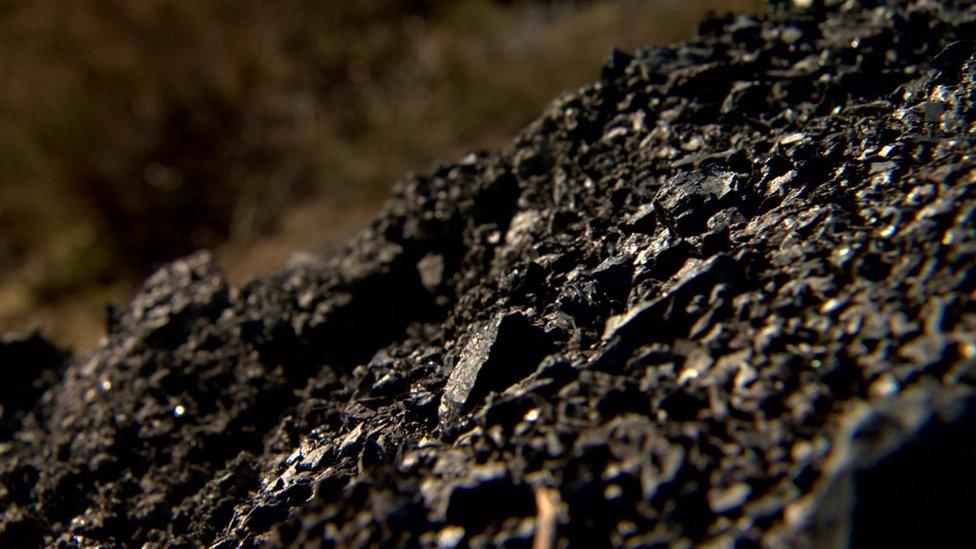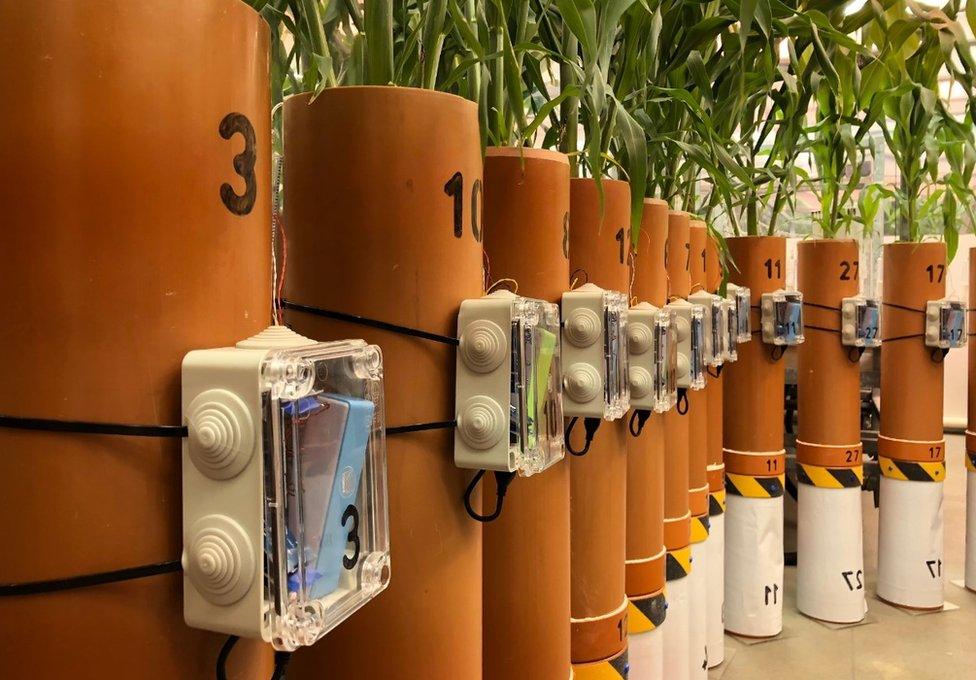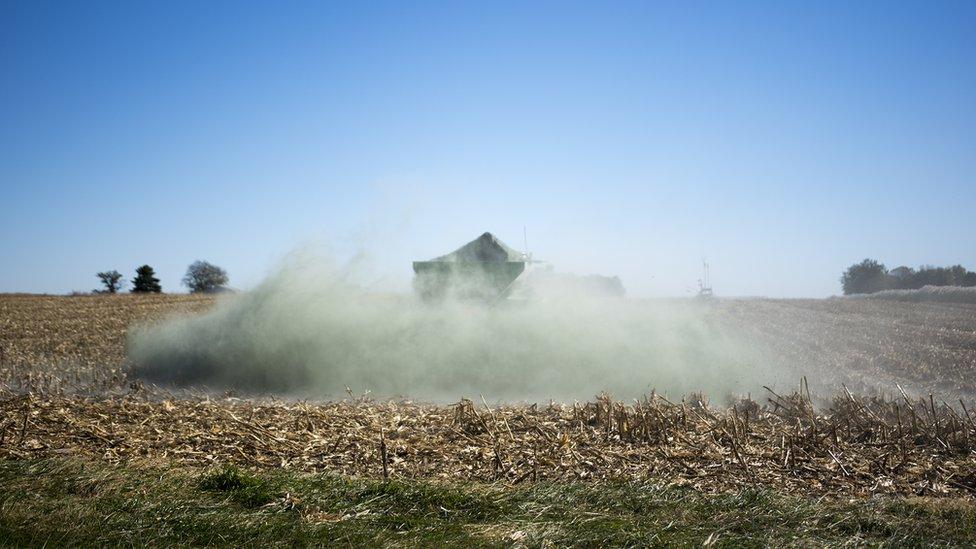Climate change: Can 12 billion tonnes of carbon be sucked from the air?
- Published

Slag heaps may have the potential to absorb CO2
Is it remotely feasible to remove 12 billion tonnes of carbon dioxide from the air? Every year. For decades to come.
That's the challenge posed by the latest conclusions of the UN's climate science panel.
It says that only by pulling this heat-trapping gas out of the atmosphere can we avoid dangerous climate change.
But according to one leading researcher, there's a bit of a hitch: "We haven't a clue how to do it".
The problem is that scientists reckon that even if the world manages to cut emissions of the gas, it will no longer be enough to avoid the worst impacts.
We've got to go a step further, they say, and find ways of doing something never attempted before: get rid of the gas that's already out there. And get started on it as soon as possible. On an unimaginable scale.
What ideas are around?
The most headline-grabbing solution is for giant machines to filter the air and strip out the gas, as my colleague Matt McGrath has reported.
But although the costs are falling, they remain very high and many wonder whether it's feasible to plaster the planet with so much hardware.
Forests do the job of soaking up carbon dioxide, because the trees need it to grow, but if they're left to rot or are burned, the gas will be released back out again.
There are schemes for fertilising the oceans to encourage plankton to flourish, absorb CO₂ and drag it to the ocean floor - but there are risks of unintended consequences.

Plants are being fed on soil enriched with volcanic powder
Yet another avenue is to mimic a geological process known as weathering, in which rocks are broken down in a chemical reaction that draws carbon dioxide from the air.
This happens all the time naturally but took off in spectacular fashion more than 400 million years ago.
In an ancient chain reaction, as land-based plants evolved to become larger, it's believed their roots sought to extract more mineral nutrients from the rocks, eroding them and exposing them to the air.
That in turn led to a massive reduction in CO₂ in the atmosphere. Could the same effect be repeated?
Prof David Beerling hopes so.
A scientist at Sheffield University, he's leading a ten-year project with a £10m budget from the Leverhulme Trust, external to investigate the climate potential of rock.
How could rock help tackle global warming?
The concept is to take the volcanic rock basalt, grind it up into a powder and then scatter it on fields.
Trials on a research farm in Illinois have found that the basalt acts as a fertiliser, boosting crop yields, which might help persuade farmers to use it instead of high-carbon artificial fertiliser.
And early results from smaller experiments in Prof Beerling's lab in Sheffield show a more profound benefit: that the presence of the rock in the soil also boosts the amount of carbon dioxide that's taken up, maybe by as much as four times.

The powdered volcanic rock can be added to fields to try to trap CO2

As part of the project, trials using basalt have started in Malaysia and Australia to see how different environments affect the results.
The vision is for the biggest emitters such as the US, China and Brazil to take this up, use basalt on their vast agri-businesses and - ideally - soak up a few billion tonnes of CO₂.
Prof Beerling knows that some regard this as over-optimistic but he is clear that a grand strategy is needed.
"Once CO₂ goes up into the air, it doesn't come down unless you do something about it, and the effects last for millennia. And once the ice sheets go, that's it," with millions of people living on or close to coastlines at risk.
"At the moment we have no idea how to remove billions of tonnes of CO₂ from the atmosphere… it's an enormous technological challenge that dwarfs anything we've seen before."
Where would all this rock come from?
If it all had to be freshly dug up, the environmental cost might doom the idea from the start.
But the industrial age has cleared billions of tonnes of the right kind of rock from open-cast mines and has also generated massive amounts of "slag" - waste from iron and steel production - which could also be used.
The practical challenges are obviously immense. But the slag itself, which historically was dumped unwanted in mountainous heaps, is surprisingly good at trapping CO₂.
Dr Phil Renforth of Cardiff University has been gathering samples from some forgotten corners of Britain's industrial heritage. I joined him on a dark hillside in south Wales.
"Globally we produce half a billion tonnes of slag around the world," he said, "and that could capture something on the order of a quarter of a billion tonnes of CO₂.
"So it's not going to do everything but it might be relevant for us."
When might any of these ideas be ready?
That's a question that usually produces shrugs. Too little is known at this stage.
I ask Prof Beerling when the basalt-spraying technique might be in use, assuming it's eventually proven to work on a large scale.
"The infrastructure for farmers to deploy basalt on their crops is already in place. If proven safe and effective, it might be deployable within a decade or two," he says.
Yet all the time, even more CO₂ is being added to the atmosphere - and with few options for reversing it.
Follow David on Twitter. , external